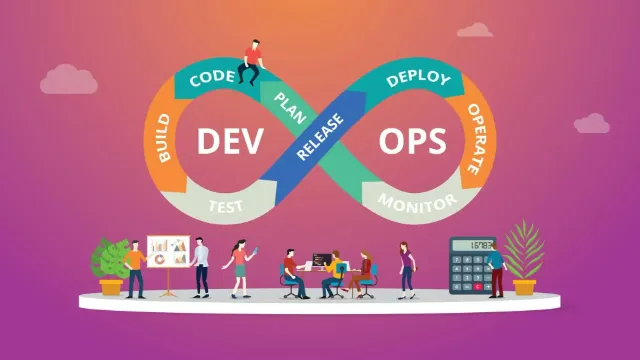The Fundamental Guide To Scrum And Agile Project Management

Agile and Scrum are an inseparable pair in the world of project management. But there is one thing that isn’t right and must be fixed. Agile and Scrum aren’t the same. Scrum is a subset of Agile and it can’t be used interchangeably.
Here is a guide introducing Agile and Scrum for beginners.
What is Agile?
Agile is a time-boxed framework following an iterative approach while building software. Agile breaks down large projects into phases before splitting the requirements into increments, with each increment lasting 2-4 weeks.
We shall move to Scrum and learn the Difference Between Agile and Scrum. What is Scrum?
Scrum is a methodology emphasizing self-organization, collaboration, and an incremental approach to product development. It’s a lightweight framework that offers guidelines rather than concrete rules. And Scrum can help teams solve complex problems through the development of adaptive solutions.
Scrum Roles
Scrum has three significant roles for planning, organizing, and maximizing the process. All of them are crucial to its success.
Product Owner
According to the Scrum Guide, the Product Owner is responsible for translating high-level Product Features into cohesive and meaningful user stories which make up our Project’s requirements.
The Product Owner must not only be able to communicate and explain project goals to co-founders as well as investors but also in detail describe the product’s backlog by using a jargon-free language anyone can understand. It is imperative to inform your entire team of any changes that may alter its vision or affect the product backlog at large.
Scrum Master
The scrum master is accountable to making sure that the team adheres to all agile principles and values. They inspect if non-agile practices are involved, examine the team atmosphere and make sure the team environment is suitable for high performance.
Development Team
The Scrum team is a group of developers committed to delivering any feature of a product within the span of one sprint. This is done by ensuring they have a plan that’ll help keep their tasks organized and well-paced, whereby the deadline for everything is set right down to the details so that there’s no guesswork or uncertainty involved when it comes to getting everything accomplished on time.
Also Read: Software Development Life Cycle Process: Phases and Main Peculiarities
Scrum Process
The Sprint workflow or Scrum events are created to assist the team members in evaluating their work and communicating with each other during the development process. The workflow remains constant in all the sprints. The process consists of
1. Sprint Planning
The team reviews the list of requirements and determines which ones will be marked as a priority in the upcoming sprint. The purpose of sprint planning is to choose what the team will work on during each sprint so it’s important to discuss what the potential benefits are of sprinting through that particular project, as well as how exactly we can get it done – whether that means moving forward with just yourself or by getting another member or members involved in whatever way you deem necessary.
2. Sprint
Sprints are fixed lengths of one month or less. During this time the essential components for achieving the product goal consist of Scrum planning which occurs at the beginning of the sprint, and daily communication in the form of a scrum meeting.
3. Daily Scrum
Daily Scrum is a quick 15-minute stand-up meeting facilitated by the Scrum Master, where all developers of the Scrum Team gather to inspect the progress toward the sprint goal and adapt to change, adjusting to the upcoming sprints accordingly.
4. Sprint Review and Sprint Retrospective
Sprint Review
The purpose of the sprint review is to determine what works and what doesn’t. The team displays their work at a meeting and discusses with the stakeholders whether they have achieved their sprint goal. They take into account the changes that customers have requested in this meeting, which enables them to change course as necessary.
Sprint Retrospective
The sprint retrospective is a time to discuss the previous week’s accomplishments and challenges. This is a time for reviewing what went well as well as a chance for identifying where mistakes were made and how they can be solved for the better.
It’s a full team meeting in which everyone participates actively in finding ways in which to improve the way they work together without losing sight of their current goals and objectives.
Scrum Artifacts
● Product Backlog
A product backlog is the estimate of work that needs to be done to complete a product. It breaks down this work into individual tasks or user stories.
● Sprint Backlog
In Scrum, the Sprint Backlog refers to a list of tasks required to be done in each sprint. The tasks listed here ensure that the development goals for each sprint are met. The items listed in this backlog should reflect current priorities based on how much they contribute towards meeting the product’s release velocity.
● Product Increment
A product increment is the sum of all new features, fixes, and other types of changes that were rolled out during a sprint. Every increment should be of an already existing non-buggy and scalable feature added to the overall project. At the end of every increment, an artifact referred to as a ‘Product Increment’ (PI) should be created in order for it to be deemed ‘Done’ with regards to the Definition of Done for Scrum methodology.
Author Bio
Naveen Kumar Singh is an Agile Coach and a Professional Scrum Trainer (PST), facilitates Scrum Master Training, and Scrum Developer.






